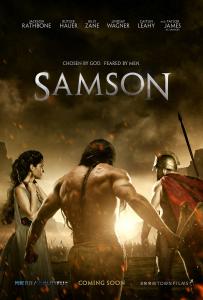As a Christian and a pastor, I have mixed emotions about the recent spate of Bible-inspired and Christian films that have been made. On the one hand, I appreciate films I can take my kids to and the willingness by Hollywood to look at evangelicals as more than Southern and Midwestern stereotypes. On the other hand, I am offended by the notion that because a film was made by Christians or is about Jesus, that I need to get behind it, no matter how poorly made it might be.
The greatest “Christian” movie I have ever seen, though, is one that was not marketed as a Christian film. In fact, The Tree of Life was hardly marketed at all, though it was nominated for Best Picture in 2011 (and the great Emmanuel Lubezki was nominated, and should have won, for Best Cinematography). I’m not even certain the writer-director, Terrence Malick, is a Christian, but it is evident that he is a philosopher and a theologian. And, despite the fact that the enigmatic director almost never gives interviews, what we do know about his life suggests that this is his most personal film, and probably his masterpiece.
If you have never watched a Malick film, the first thing you must do is prepare yourself. What you are about to watch is not going to be a typical Hollywood movie. There will be a story, but it will be told more through its visuals than through its dialogue. The narrative will seem to wander and you will often wonder why certain shots and scenes were included. If your immediate reaction to a Malick film is bewilderment and dislike, you are probably normal. But, and don’t take this personally, part of that may be because we are so used to being spoon-fed stories in movies, with everything immediately clear and understandable, rather than letting ambiguity and unresolved questions challenge us to ponder possibilities and deeper questions not immediately evident. As Craig Detweiler says, in an article entitled “Eyes to See: To the Wonder,” “[Malick] lulls us in with beauty. Then, he makes us do the work. He doesn’t tell us what to think. He doesn’t twist us up in character or plot. He just unspools a world of wonder and delight, everyday glory that is available for all to access; if we choose.”
Another thing that will likely throw off first-timer viewers is the use of voiceover, one of Terrence Malick’s trademarks. However, unlike most films with voiceover, what is noticeable and unique is that his voiceovers often do not go along with the images or action on the screen. Matt Zoller Seitz commented recently in a post on rogerebert.com how Malick, “uncouples narration from picture and sound, to the point where his films seem at once more literary and more cinematic than those of any other director… He’s telling us something different from what he’s showing us. He’s telling us that experience is so powerful, so big, so mystifying, so beautiful, that neither words nor thoughts can do it justice.”

The Tree of Life starts with a 20 minute prologue, telling us in brief what it will be about. A woman, Mrs. O’Brien (played by Jessica Chastain), tells us about the contrast of nature and grace, and we find out her son has died. Her family’s grief is explored briefly before giving way to a montage of imagery set to magnificent music, and it takes a few minutes to realize that we are watching a vision of the creation of the world. Starting with this creational imagery, the film proceeds to envision the four stages of redemptive history that theologians lay out as a basic Scriptural paradigm: Creation, Fall, Redemption, Consummation.
It will likely take a second viewing (and some knowledge of the Old Testament) before realizing that The Tree of Life is quite obviously involved with the story of Job. It’s not really a re-telling, but more like an interplay with it. The first obvious clue we get is the quote that opens the film, quoting God in Job 38, “Where were you when I laid the foundations of the earth? What supports its foundations, and who laid its cornerstone as the morning stars sang together and all the angels shouted for joy?” We soon realize that, while the film focuses much on Mrs. O’Brien’s grief and the different ways that she and her husband (played by Brad Pitt) come to terms with the world and their suffering, it is really about her oldest son, Jack, who is played by Hunter McCracken as a young boy and by Sean Penn as a middle-aged man. Jack’s initials are JOB, Jack O’Brien, and we watch as he wanders through his memories, realizing that his adolescent perspective of his parents was possibly as misplaced as Job and his friends’ judgments about God were.
Nick Olson, in an essay called “They Who See God’s Hand: The Tree of Life as an ‘Upbuilding Discourse’” shows how the film is an exposition of the grace behind Job’s words in Job 1. Olson writes, “In a scene that seems both a thematic microcosm of the film as a whole and right at its center, a preacher is giving a sermon on Job, and part of the sermon, as it turns out, is taken directly from [Soren] Kierkegaard’s 1843 Upbuilding Discourse, ‘The Lord Gave, and the Lord Took Away; Blessed be the Name of the Lord’… [T]his is what Terrence Malick seems to be up to in Tree: conveying and inspiring Job’s way of life in this particular sense—a longsuffering gratitude that is present even in the midst of our suffering and alienation. It’s the posture of one who believes that there is a trustworthy Love which is the ground of existence.”
If the Job story were all the film is about, it would be enough. And yet, the film is richly multi-layered, an embarrassment of riches of insight into human nature. Though it is not usually described as a coming-of-age film, it has more keen observation about adolescent boys than most films from that genre. While Mr. O’Brien’s story is subservient to his wife’s story, his story is also deeply insightful, that of a trained classical musician frustrated by life and in the end broken by his own inability to love. The film’s depiction of prayer and lament are perhaps unparalleled in contemporary cinema. At one point, Jack says in voiceover, “Where were you? You let a boy die. You’ll let anything happen. Why should I be good if you aren’t?” And as we listen, we wonder if our own prayers have ever been that real.
If film is primarily mindless entertainment, then there is no reason to watch any of Terrence Malick’s films. But, if film is art, then Malick is a master and this film is a Rembrandt or a Monet. And if film is philosophy, volumes could be written about The Tree of Life. And, finally, if film can possibly be akin to prayer or praise, this is cinema’s Book of Common Prayer.













